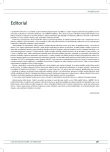Multi‑Modal Monitoring of the Brain in Patients with Severe Craniocerebral Trauma and Subarachnoid Hemorrhage in Neurolocritical Care
Authors:
A. Hejčl 1; M. Bolcha 1; J. Procházka 2; M. Sameš 1
Authors‘ workplace:
Ne urochirurgická klinika UJEP a Krajská zdravotní a. s., Masarykova nemocnice v Ústí nad Labem, o. z., 2Oddělení intenzivní medicíny, Krajská zdravotní a. s., Masarykova nemocnice v Ústí nad Labem, o. z.
1
Published in:
Cesk Slov Neurol N 2009; 72/105(4): 383-387
Category:
Short Communication
Overview
The therapy of pati ents with severe tra umatic brain injury and subarachno id hemorrhage is focused on the preventi on and therapy of brain ischemi a ca used by brain edema and vasospasm. Invasive monitoring of the intracrani al pressure and evalu ati on of vasospasm by transcrani al Doppler ultrasonography are a part of clinical ro utine; while new methods – tissue oxymetry, brain metabolism and cerebral blo od flow (so called multimodal monitoring) are still at an e arly stage in clinical practice. The purpose of implementing these methods is to improve o ur di agnosis of brain metabolism and e arly di agnosis of brain ischemi a. In this paper we present the contributi on of multimodal monitoring in the therapy of pati ents with brain tra uma and subarachno id hemorrhage as illustrated in fo ur case reports.
Key words:
tra umatic brain injury – vasospasm – monitoring – microdi alysis – oxymetry
Sources
1. Flaada JT, Leibson CL, Mandrekar JN, Di ehl N, Perkins PK, Brown AW et al. Relative risk of mortality after tra umatic brain injury: a populati on‑based study of the role of age and injury severity. J Ne urotra uma 2007; 24(3): 435– 445.
2. Molyne ux AJ, Kerr RS, Yu LM, Clarke M, Sne ade M, Yarnold JA et al. Internati onal Subarachno id Ane urysm Tri al (ISAT) Collaborative Gro up. Internati onal subarachno id ane urysm tri al (ISAT) of ne urosurgical clipping versus endovascular co iling in 2143 pati ents with ruptured intracrani al ane urysms: a randomised comparison of effects on survival, dependency, seizures, rebleeding, subgro ups, and ane urysm occlusi on. Lancet 2005; 366(9488): 809– 817.
3. Tisdall MM, Smith M. Multimodal monitoring in tra umatic brain injury: current status and future directi ons. Br J Anaesth 2007; 99(1): 61– 67.
4. Hejcl A, Bartos R, Humhej I, Bolcha M, Bejsovec D,Procházka J et al. Decompressive crani ectomy in the tre atment of posttra umatic edema and the contributi on of new di agnostic methods. Cas Lek Cesk 2007; 146(4): 307– 312.
5. Persson L, Valtysson J, Enblad P, Warme PE, Cesarini K,Lewen A et al. Ne urochemical monitoring using intracerebral microdi alysis in pati ents with subarachno id hemorrhage. J Ne urosurg 1996; 84(4): 606– 616.
6. Fila un M, Horáček M, Steindler J, Pekař L, Cvachovec K. Monitorování mozkové oxygenace. Cesk Slov Ne urol N 2008; 71/ 104(6): 657– 663.
7. Otevřel F, Smrčka M, Kuchtičková Š, Mužík J. Korelace ptiO2 a apoptózy u fokální mozkové ischemi e a vliv systémové hypertenze. Cesk Slov Ne urol N 2007; 70/ 103(2): 168– 173.
8. Ståhl N, Schalén W, Ungerstedt U, Nordström CH. Bedside bi ochemical monitoring of the penumbra zone surro unding an evacu ated acute subdural haematoma. Acta Ne urol Scand 2003; 108(3): 211– 215.
9. Adamides AA, Rosenfeldt FL, Winder CD, Pratt NM, Tippett N, Lewis PM et al. Brain tissue lactate elevati ons predict episodes of intracrani al hypertensi on in pati ents with severe tra umatic brain injury. J Ne urotra uma 2006; 23(5): 784.
10. Boret H, Fesselet J, Me andre E, Gaillard PE, Cantais E.Cerebral microdi alysis and PtiO2 for ne uro‑monitoring before decompressive crani ectomy. Acta Anaesthesi ol Scand 2006; 50(2): 252– 254.
11. Sakowitz OW, Stover JF, Sarrafzadeh AS, Unterberg AW, Ki ening KL. Effects of mannitol bolus administrati on on intracrani al pressure, cerebral extracellular metabolites, and tissue oxygenati on in severely he ad- injured pati ents. J Tra uma 2007; 62(2): 292– 298.
12. Unterberg AW, Sakowitz OW, Sarrafzadeh AS, Benndorf G, Lanksch WR. Role of bedside microdi alysis in the di agnosis of cerebral vasospasm following ane urysmal subarachno id hemorrhage. J Ne urosurg 2001; 94(5): 740– 749.
Labels
Paediatric neurology Neurosurgery NeurologyArticle was published in
Czech and Slovak Neurology and Neurosurgery

2009 Issue 4
- Metamizole vs. Tramadol in Postoperative Analgesia
- Memantine in Dementia Therapy – Current Findings and Possible Future Applications
- Memantine Eases Daily Life for Patients and Caregivers
- Metamizole at a Glance and in Practice – Effective Non-Opioid Analgesic for All Ages
- Advances in the Treatment of Myasthenia Gravis on the Horizon
Most read in this issue
- Tumo urs of the Third Cerebral Ventricle
- Acquired Neuromyotonia with Minor Central Symptoms and Antibodies against Voltage- Gated Potassium Channels – a Case Report
- Botulinum Toxin in Spasticity Management
- Paroxysmal Kinesigenic Dyskinesi a – a Case Report of a Yo ung Woman with Alternating Hemidystoni a
